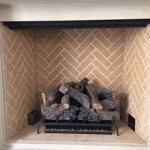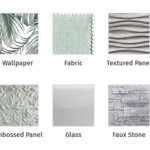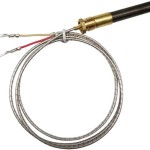Fake Logs for Propane Fireplaces: A Comprehensive Guide
Propane fireplaces offer a convenient and efficient alternative to traditional wood-burning fireplaces. They provide instant heat, require minimal maintenance, and eliminate the need for wood storage. A crucial component of a propane fireplace's aesthetic appeal is the set of fake logs. These artificial logs are designed to mimic the look of real wood, enhancing the ambiance and creating a realistic fire experience. Selecting the right fake log set is paramount for achieving the desired visual effect and ensuring the safe and efficient operation of the fireplace.
The market offers a wide variety of fake log sets, each with unique characteristics in terms of material, design, venting requirements, and heating capacity. This article aims to provide a comprehensive guide to understanding the different types of fake logs available for propane fireplaces, their benefits, and the key factors to consider when making a purchase.
Understanding Fake Log Materials
The material used to construct fake logs significantly impacts their appearance, durability, and heat resistance. The most common materials used are ceramic fiber, refractory cement, and vermiculite.
Ceramic Fiber Logs: These logs are manufactured from ceramic fibers bonded together with a heat-resistant binder. Ceramic fiber logs are lightweight, highly heat-resistant, and offer excellent flame patterns. They tend to blacken over time due to soot accumulation, which can enhance their realism. However, ceramic fiber logs are relatively fragile and can be easily damaged if mishandled. They are typically more expensive than other types of fake logs but offer superior performance and appearance.
Refractory Cement Logs: These logs are made from a mixture of cement and heat-resistant aggregates. They are more durable than ceramic fiber logs and can withstand more physical abuse. Refractory cement logs are also heavier, which can contribute to a more substantial and realistic appearance. However, they may not offer the same level of detail or flame pattern as ceramic fiber logs. Refractory cement logs tend to be more affordable than ceramic fiber logs.
Vermiculite Logs: Vermiculite is a hydrated phyllosilicate mineral that expands significantly when heated. Vermiculite logs are lightweight and porous, allowing for excellent heat distribution. They are often coated with a heat-resistant paint to improve their appearance. Vermiculite logs are generally less expensive than ceramic fiber and refractory cement logs. However, they may not be as durable or visually appealing as the other options.
The choice of material depends on individual preferences, budget, and desired level of realism and durability. For those prioritizing appearance and performance, ceramic fiber logs are often the preferred choice. For those seeking a more durable and affordable option, refractory cement logs may be a better fit. Vermiculite logs offer a budget-friendly alternative but may compromise on appearance and longevity.
Venting Requirements and Fireplace Types
Propane fireplaces are available in vented and vent-free models, each with specific requirements for log placement and airflow. Understanding these requirements is crucial for ensuring safe and efficient operation.
Vented Fireplaces: Vented fireplaces require a chimney or vent to exhaust combustion byproducts such as carbon monoxide. The fake logs in a vented fireplace are primarily for aesthetic purposes and do not significantly contribute to heat output. Log placement in a vented fireplace is important for maintaining proper airflow and preventing the accumulation of soot or carbon monoxide. Manufacturers provide specific instructions for log placement, which must be followed carefully. Incorrect log placement can obstruct the vent and create a hazardous situation.
Vent-Free Fireplaces: Vent-free fireplaces do not require a chimney or vent and are designed to burn cleanly and efficiently, producing minimal combustion byproducts. These fireplaces are equipped with oxygen depletion sensors (ODS) that automatically shut off the gas supply if oxygen levels drop below a safe threshold. The fake logs in a vent-free fireplace play a more critical role in heat distribution and combustion efficiency. Log placement is even more critical in vent-free fireplaces to ensure proper airflow and prevent the ODS from malfunctioning. Incorrect log placement can lead to incomplete combustion, increased carbon monoxide production, and potential safety hazards. Vent-free fireplaces require logs specifically designed and certified for vent-free use.
When selecting fake logs, it is essential to verify that they are compatible with the fireplace type (vented or vent-free). Using the wrong type of logs can compromise safety and performance. Always consult the fireplace manufacturer's instructions for specific log placement guidelines.
Key Considerations When Choosing Fake Logs
Selecting the right fake log set involves considering several factors beyond material and venting requirements. These factors include size, design, heat output, and aesthetic preferences.
Size and Fit: The size of the fake logs must be appropriate for the dimensions of the firebox. Logs that are too large can obstruct the burner and impede airflow, while logs that are too small may not provide adequate coverage and visual appeal. Measure the firebox carefully before purchasing a log set and ensure that the logs fit comfortably without crowding the burner or obstructing the vent (for vented fireplaces). Most manufacturers specify the firebox size that each log set is designed for.
Design and Realism: Fake logs are available in a variety of designs, ranging from traditional split oak to modern birch. The level of realism varies depending on the manufacturing process and the materials used. Consider the overall aesthetic of the room and choose a log set that complements the existing décor. Some log sets feature intricate details such as bark texture, knots, and charred areas to enhance realism.
Heat Output: While fake logs primarily serve an aesthetic purpose, they can also influence the heat output of the fireplace. The material and design of the logs can affect how efficiently heat is radiated into the room. Some log sets are designed to maximize heat output, while others are more focused on visual appeal. Consider the heating needs of the room and choose a log set that provides the desired level of warmth. For vent-free fireplaces, selecting logs specifically designed for optimal heat output is especially important.
Aesthetic Preferences: Ultimately, the choice of fake logs is a matter of personal preference. Consider the desired ambiance and select a log set that creates the desired mood. Some people prefer a more rustic and natural look, while others prefer a more contemporary and minimalist design. Browse through different options and choose a log set that appeals to your individual taste.
Safety Certifications: Ensure that the chosen log set meets relevant safety standards and certifications, such as those from ANSI (American National Standards Institute) or CSA (Canadian Standards Association). These certifications indicate that the logs have been tested and approved for safe use in propane fireplaces.
Installation and Maintenance: Carefully follow the manufacturer's instructions for installing the fake logs. Proper installation is crucial for ensuring safe and efficient operation. Regularly inspect the logs for damage or wear and tear. Clean the logs periodically to remove soot and dust, using a soft brush or vacuum cleaner. Avoid using harsh chemicals or abrasive cleaners, as these can damage the logs.
By considering these key factors, consumers can make informed decisions and select the perfect fake log set to enhance the beauty and functionality of their propane fireplace.
In addition to the above points, it's important to consider the long-term cost of ownership. While some cheaper log sets may seem appealing initially, they may require more frequent replacement due to lower durability. Investing in a higher-quality log set can save money in the long run by reducing the need for replacements.
Furthermore, consider the environmental impact of the log set. Opt for logs made from sustainable materials or those manufactured using environmentally friendly processes. This contributes to a more responsible and sustainable approach to home heating.
Finally, always prioritize safety when using a propane fireplace. Regularly inspect the fireplace and log set for any signs of damage or malfunction. Ensure that the fireplace is properly vented (for vented models) and that the oxygen depletion sensor is functioning correctly (for vent-free models). Never leave a propane fireplace unattended, and always turn it off completely when not in use.

Grisun Fake Gas Fireplace Logs 7pcs Faux Ceramic White Birch Wood Firepit For Firebowl Vented Ventless Electric Inserts Propane Natural Indoor Or Outdoor Decor Com

Boyel Living Ceramic Propane Fireplace Imitation Wood 10 Pieces Wf Hw56384 The Home Depot

Peterson Real Fyre White Birch Vented Gas Log Set Woodland Direct

10pcs Ceramic Wood Gas Log Set Fireplace Imitation Propane Firepit Logs Com

Fake Logs For Gas Fireplace Vented Propane
How To Arrange Gas Logs Howstuffworks

Real Fyre W White Birch Vented Gas Logs

Vented Gas Logs Heater Or Decorative Bart Fireside

Ceramic Wood Logs Set For Gas Fire Pit Fireplaces Decoration Fake Log Vented Propane Electric Indoor Outdoor Pits Firepit Fireplace

How Long Do Gas Logs Last To Replace Fireplace
Related Posts








